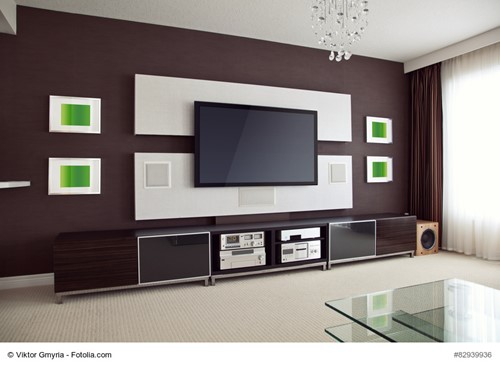 Buying a new television can be a daunting task. With technologies changing so rapidly, it can seem like you need to take a new crash course in the latest tech trends every time you buy a new product.
Buying a new television can be a daunting task. With technologies changing so rapidly, it can seem like you need to take a new crash course in the latest tech trends every time you buy a new product.
However, a TV is an investment that you’ll get a lot of use out of if you and your family spend a lot of time in the living room. And, since most new televisions come equipped with apps like Netflix and Hulu, it’s worth taking time to learn which one is suitable for your family and that fits within your budget.
In this article, we’ll give a brief breakdown of the latest trends to help you choose the right TV for your living room.
At one time, the size of your television was the best indicator of price. But these days you’ll find TVs that are the same size but vastly different prices. That’s because TVs now contain a number of features related to audio and video quality, and smart TV capabilities like apps and games.
However, screen size still does matter when it comes to video quality, fitting the layout of your living room and your personal preferences. If you aren’t sure what size you’ll need, try visiting an electronics store and standing as far back from the tv as your couch or sofa. You can also try this at a friend’s house who has a similar setup to you.
Remember that having a huge TV isn’t always the best option if you’re in a small room. For most living room setups, the ideal size is somewhere between 55 and 65 inches.
Many of us have a collection of DVDs somewhere in our house that we save for a rainy weekend. It might surprise you to know that the quality of a DVD is lower than most streaming videos on the internet these days.
Video quality is based on a few factors and one of them is resolution. Screen resolution has improved exponentially in the recent years. What resolutions are available?
4K or Ultra HD - The current gold standard of screen resolutions is 4K, which contains a whopping 8 million pixels.
1080p or HD - Still one of the most common resolutions, 1080p can be found in many recent models and can look at sharp as 4K televisions.
720p - Only the smallest and most inexpensive televisions are still using 720p resolution sizes. However, if you only use your television for watching cable channels, it should be noted that many major networks broadcast in 720p.
To effectively “future-proof” your TV, 4K is your best option. It is slowly becoming the standard for video and will last the longest without looking antiquated.
There are other aspects of picture quality than resolution. The way the TV is lit os one consideration. Most TVs on the market today are LED-based. In LED TVs, a backlight produces the light for each pixel. One exception is OLED TVs in which each pixel is producing its own light.
The jury is still out on which is better, but OLED seems to have a leg up on LED.
The other things you’ll want to consider are a curved screen, Smart TV capabilities, BlueTooth, and the number of HDMI ports. These are all dependent on your preferences, but it should be noted that as TVs evolve, you might not have access to some newer apps.